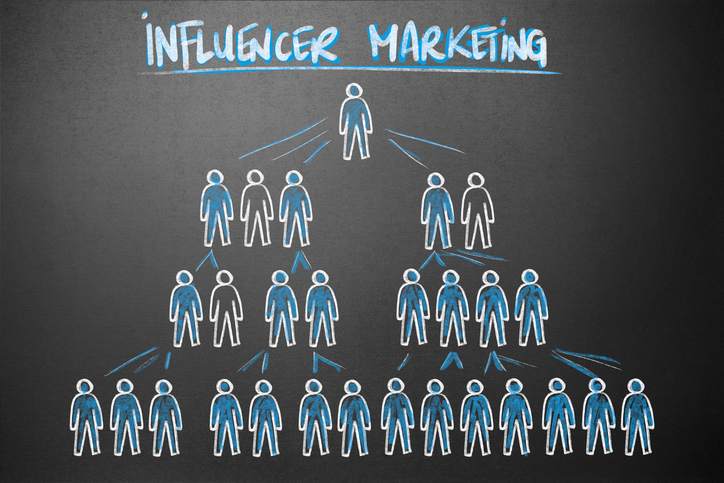3 Influencer Marketing Mistakes That Damage Your ROI
Influencer marketing is the hottest strategy on the block right now. According to Tomoson, for every dollar that companies are putting into influencer marketing, they’re getting $6.50 back, and 59% are planning to increase their influencer marketing budget over the next 12 months.
Working with influencers can be profitable… but there’s an art and science to every single campaign, and there isn’t a one-size-fits-all for companies.
Coupled with the fact that influencer marketing is a fairly new industry, with major educational and training institutions being slow to incorporate it into the curriculum, the number of qualified professionals who can actually yield a $6.50 per dollar spent ROI (or better) versus the demand is scarce. Most brands haven’t figured out how to create consistent, profitable results yet.
After over a decade of working with influencers, here are the three most common factors I’ve found that yield a low or negative ROI for brands.
Not Setting Measurable Goals and Outcomes for Campaigns
It’s impossible to measure whether influencer marketing campaigns are working without knowing what your company is seeking from influencers.
Do you want to increase your social following on your platforms? Are you looking to drive sales to a new product launch?
Marketing and social teams often end up being at odds about the expected outcomes of a campaign.
It’s important to set clear KPIs and to track the effectiveness of individual influencers within a campaign to see who is actually influencing their audience the most. Just because a campaign starts with 15 influencers, it doesn’t mean that all 15 have to continue through until the end.
If someone isn’t influencing their audience, they either need closer oversight and content approval, or the product or service might not be as great of a fit as you initially thought.
Knowing whether new followers or e-mail subscribers, increased sales, a higher page ranking on Google, etc. is your top priority when working with influencers will help to chart an appropriate course of action for reaching goals.
Disregarding the Buyer Cycle
On average, a buyer needs to see a product or service at least 6 to 8 times before purchasing. This is one of the most well-established and classic rules of marketing to establish know, like, and trust.
Most influencer marketing campaigns are devised as only single or double touch point campaigns, either due to budget or the assumption that there will be some audience overlap between influencers in the campaign.
However, with organic reach declining on social media and Youtube, this isn’t necessarily the case. It’s possible that someone will only see one post in a campaign.
The influencer campaigns that are the most effective work with a small number of influencers who are proven (thanks to those KPIs your company will have established) to be influencing their audience with your existing products or competitor products or services.
These can be short or long-term campaigns, although companies generally see the best ROI when working with influencers for a longer period of time.
Food brand Iceland, for instance, worked with a select number of influencers over the course of a year on their influencer marketing campaigns.
Selecting the Wrong Influencers
One of the top things to verify when selecting followers is the authenticity of the account. Unilever recently called for greater transparency and honesty on the part of influencers. Several mid-level influencers have purchased followers from automated bot accounts or use comment pods to boost their engagement, and neither of these will drive sales or authentic engagement.
It’s important to ask for an influencer’s follower metrics or screenshots from Google Analytics before inking a contract, in order to ensure your influencers are doing things the ethical way (which will ultimately boost your ROI).
Furthermore, selecting influencers with a strong brand fit whose message aligns with the values of the company is essential. When influencers and brands don’t have aligned values, brands will see their marketing dollars go to waste.
For example, in 2017, SoCal Honda dealers – whose digital presence is the definition of wholesome and helpful – partnered on Instagram and Facebook with Heath Hussar, a chain-smoking prankster with a long established history of having non-Honda cars featured prominently in his vlogs.
The content that Hussar produced never actually features Honda cars in it, and… could have some not so subtle allusions to the brand being the equivalent of the poop emoji. Aside from the unsavory content that didn’t actually feature the cars, Hussar’s audience also consists largely of teenage girls under the driving age, so they’re the wrong target audience. They’re not in the financial position to buy a car, nor are the majority of them driving age.
A better fit in a top-tier influencer would be Hannah Hart. Her brand, like SoCal Honda’s, has philanthropy built in, and her audience skews slightly older, meaning that they’d actually be able to purchase the item and would likely be influenced by her promotion.
Calculated Trial and Error Is Always a Winning Strategy
Like all forms of marketing, effective influencer marketing will have some element of trial and error. There will be influencers who unexpectedly drive a ton of sales to your brand, and others who will be disappointments.
If you’ve run an unsuccessful campaign, that doesn’t mean that influencer marketing doesn’t work – it just means it’s time to try a different strategy.
Keeping these three things top of mind as you’re planning your budget and KPIs will help you yield your highest return on investment.
Article written by: Erika Ashley
0

